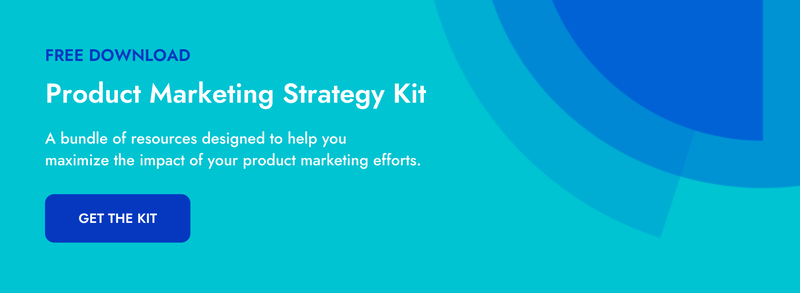 Crayon's Product Marketing Spotlight is an interview series where we chat with product marketers to get a glimpse into their careers and gain unique insight into product marketing strategy. In this edition of Product Marketing Spotlight Series, we shine the light on Scott Heimgartner, Director of Product Marketing at Maropost.
Crayon's Product Marketing Spotlight is an interview series where we chat with product marketers to get a glimpse into their careers and gain unique insight into product marketing strategy. In this edition of Product Marketing Spotlight Series, we shine the light on Scott Heimgartner, Director of Product Marketing at Maropost.
ED: What is your role?
SH: I’m the Director of Product Marketing at Maropost, responsible for Maropost’s product marketing strategies. This includes all aspects of go-to-market including research, competitive pulse, segmentation, personas, messaging, product launches, and customer advocacy.
ED: What does the company do?
SH: Maropost is a marketing automation and ecommerce platform that helps small to mid-sized B2C ecommerce companies improve their customer engagement and drive more conversions. We help lifecycle and ecommerce marketers create and optimize their cross-channel (email, mobile, social, and web) marketing and turn their audience into buyers. While our heritage has been in email marketing, we’ve been expanding our platform over the years to really become a single-source solution for our customers’ marketing and ecommerce needs.
ED: Tell me a little bit about your career path… Did you always know you wanted to be in Product Marketing? What led you to being a Product Marketing leader?
SH: I studied finance and accounting in college, which naturally led me into corporate accounting for a computer chip manufacturer. I got my CPA and worked my way into a mergers and acquisitions team doing financial analysis and corporate due diligence of proposed company and operational acquisitions.
Eventually, I grew out of finance, which unnaturally led me into product marketing. I was the one and only product marketer for a B2C-focused, startup division and didn’t really know anything about product marketing. However, I really leaned into my curiosity side and that’s how I learned and how I scaled a team to three product marketers and helped the company grow to about $250 million by the time I left.
I moved to Chicago and spent a few years doing product marketing for a software licensing technology company, however, it wasn’t until I joined Wolters Kluwer where I was able to really expand my view of product marketing and think much more strategically. While there, I was fortunate enough to go through Pragmatic Marketing and that’s when it really clicked for me. I was able to really understand what a modern product lifecycle process looked like and what the different areas of product focuses were. And through my career, I’ve been fortunate enough to develop experiences in both product management and product marketing, which has been a catalyst for me as a product marketing leader - use those experiences to help lead and scale teams to do some really good things.
ED: How much of your day-to-day involves competitive intelligence?
SH: I come from the camp that competitive intelligence is such an important part of product marketing. Whether you’re playing offense, defense, or somewhere in between, you have to understand your competitor’s relative position in the market to establish differentiation and appropriately position your product in the minds of your buyers. And be able to reposition those competitors away from your target personas.
The markets we operate in are hyper-competitive with several named competitors, so we try to stay on top of our competitors as much as we can. However, it is really, really hard and really, really nuanced. We focus on those competitors that present the most immediate and biggest threats to your organization while keeping a pulse on the broader market dynamics. Understanding the strengths and weaknesses of who (and what) you’re competing against, and where they’re heading, has a big influence on our product and go-to-market strategies.
ED: How do you get your sales team to actually use the sales enablement resources you’re creating?
SH: Brute force. In reality, the sales teams are a customer of product marketing. They are consumers of the content you are providing to them. You have to have conversations with them and understand what’s working and what’s not working. If you have the tools to help you deliver assets faster and help understand the content they’re actually consuming, even better. Shameless plug, but we love Crayon’s dynamic Sales Battlecards feature. It's so easy to update and deploy out to our sales teams. It’s super powerful and saves us so much time.
ED: Product Marketers have a lot of different responsibilities. How do you prioritize what to focus on?
SH: Product marketing is so diverse and that’s what I love about it. In a given day, you could be leading a go-to-market strategy discussion, gathering some customer insights, going on camera for a product launch video, and writing script for a piece of content. And that’s why it's so important for product marketers to know how to ruthlessly prioritize and master the power of saying “NO.”
I’m a big believer in the 80/20 rule. You should really spend about 80% of your time on the big, strategic initiatives that will have an impact on your organization while allocating about 20% to those non-essential tasks. If you operate at a much more tactical level, consider the 60-second business case. A simple prioritization matrix for product managers has universal application. List out all your tasks then score each based upon their alignment to a specific set of criteria (Company goals, revenue growth, sales support, retention, etc.). At least you can apply some science to what you’re working on, and why.
I love a good productivity hack and there’s something I’ve been doing for a while that seems to work for me. At the start of each week, I write down the top things I want to accomplish for that week. Then at the start of each day, I write down the top 3-4 things I want to accomplish for that day. I keep this in front of me and use my calendar system to block specific time throughout the day to carve out the time. Any new items that pop-up, put that into a list to be prioritized for that week or the following week.
ED: You’ve been in both roles, Product Management and Product Marketing. So, in what ways do you think product marketing and product management work together?
SH: As much as I like to say that product marketing is a really tough job. Product management is a really, really tough job. I do feel for them. As a product manager, there are endless paths you can pursue to achieve your product vision, and those paths are often plagued with lots of opinions and not much market evidence or validation. That’s where product marketing can build those relationships and become a strategic partner to their product counterparts. Bring market context to the discussion. This context can be sourced from doing win/loss analyses, reviewing and categorizing verbatims from your NPS and validation surveys, competitive analysis, and other sources. Use that information to get your product team to think more strategically and deliver more game-changing innovation.
ED: What are your top three product launch tips?
SH: Have an agreed-upon framework. In a SaaS-world, launches come fast and they come often. A framework provides your team with a roadmap to market. It helps you align your effort to development that’s going to deliver the most value to the organization. You should revisit your framework often to see if it is still relevant. Your business, products, and marketing channels will cycle through change. It’s important that your framework adapts to those changes. And the operative phrase is “agreed-upon.” Get your stakeholders involved in developing a framework. You may have to do some education on the importance but in the end, it’s well worth your time.
Don’t sacrifice good go-to-market planning for the sake of getting a product out the door. Shipping does not equal success and I think it's been one of the biggest travesties of agile development. I’ve seen on many occasions where there is too much attention and focus on shipping the product and not nearly as much time spent on solid, go-to-market planning.
Shipping is only half the battle and simply building it hoping customers will come does not work. You still need to do the customer and competitive research to deeply understand your target audience, the competitive alternatives and your comparative position in the market. You need to consider how it's going to be packaged and priced, what you’re going to call it, and how you’re going to acquire, convert, and retain customers. You need to define your launch date, develop and test your messaging, prime the channel to build momentum, and ready the organization when the product becomes available to sell. I believe this is where a product marketer can really elevate their role and take shared ownership in the success of a product launch.
Give extra attention to your positioning and messaging and focus on simplifying. I’m re-reading the Steve Jobs biography and am inspired by his ability to simplify complex products and solutions in terms that the “every person” can understand. We’ve all heard “1000 songs in your pocket”. The reason is because its simple and it resonates. Defining and simplifying a product’s positioning in terms that resonate with your target audience can help you truly separate yourself from the competition.
ED: What is something you wish you knew earlier in your career?
SH: Don’t fear failure. It seems that earlier in my career, failure was such an evil word and carried such a heavy stigma. However, I’ve learned that failure is just part of the learning process. You should not be afraid to take some risks and try new things. There isn’t just one way of doing things. Experimentation is good. You have to figure out what works and what doesn’t work for you. Those are the learnings that push you forward and help you evolve into a better professional and better person.
ED: When you’re not hard at work, what’s your favorite thing to do?
SH: I’ve always loved the outdoors and with three children at home who are now getting at the age where they can enjoy some of those activities with me. I take them snow skiing in the winter and camping in the summer. And if I’m really lucky, I’m able to successfully bribe one of them into going golfing with me.

Related Blog Posts
Popular Posts
-
 How to Create a Competitive Matrix (Step-by-Step Guide With Examples + Free Templates)
How to Create a Competitive Matrix (Step-by-Step Guide With Examples + Free Templates)
-
 The 8 Free Market Research Tools and Resources You Need to Know
The 8 Free Market Research Tools and Resources You Need to Know
-
 Sales Battlecards 101: How to Help Your Sellers Leave the Competition In the Dust
Sales Battlecards 101: How to Help Your Sellers Leave the Competition In the Dust
-
 6 Competitive Advantage Examples From the Real World
6 Competitive Advantage Examples From the Real World
-
 How to Measure Product Launch Success: 12 KPIs You Should Be Tracking
How to Measure Product Launch Success: 12 KPIs You Should Be Tracking




%20(1).png?width=500&name=CI%20Strategy-CI%20Audit%20(1)%20(1).png)